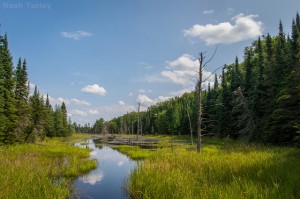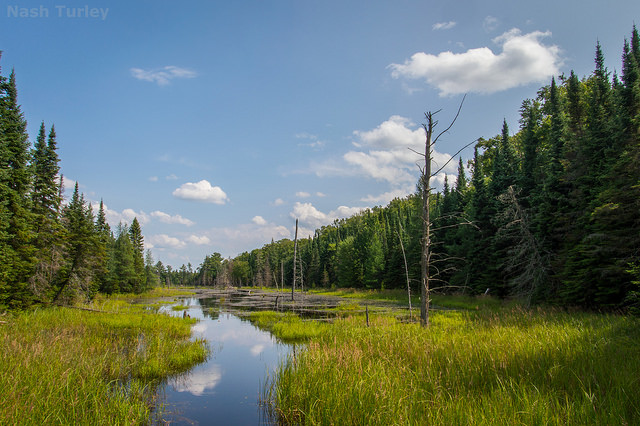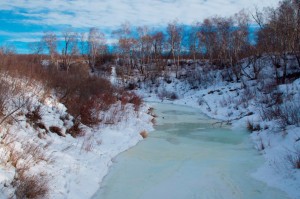by Alex Bond and Kasra Hassani
Biology & Life Sciences subject editors
While Canada is largely known for its expansive boreal forest, sprawling prairies, rugged mountains, and beautiful coasts, 15% of Canada’s total area is made of wetlands. That’s 1.5 million km2 – more than 6 times the area of the Great Lakes, or roughly the entire area of Quebec! Wetlands are also incredibly important for Canada’s biodiversity, providing habitat for one third of Canada’s threatened species for all or part of their life cycle. They also act as massive sponges, preventing flooding and erosion, storing groundwater, and protecting many of our habitats from water damage.
February 2nd is World Wetlands Day. It commemorates the Convention on Wetlands, signed in Ramsar, Iran in 1971 to protect the world’s wetlands. Canada has 37 Ramsar Sites covering >13 million ha in all provinces and territories: 1.3% of our land area, or roughly 10% of our wetland habitat.
But wetlands are also threatened by climate change. In northern Alberta, for example, wetlands are likely to recede, which will release more carbon into the atmosphere, and likely increase flooding as the habitat’s ability to retain water decreases by more than three quarters.
And wetland loss isn’t just a problem in Canada. Louisiana has lost an average of 88 km2 of its landmass each year since 1932, and is essentially disappearing. This is partly due to the draining of wetlands, and increased flooding from the loss of the environment’s buffering capacity, something we highlighted here on Science Borealis last fall.
Wetlands are centres of biodiversity for everything from plants to birds to invertebrates, and are important for many of Canada’s species at risk. Why not go see for yourself? Here’s an interactive map of Canada’s Ramsar Sites.
Whether designated a Ramsar Site or not, you can enjoy your own local wetland and its biodiversity throughout the year.

Wetland in Mikisew Provincial Park, Ontario (Photo: Nash Turley, used with permission).
***
Featuring recent Science Borealis members!
Since this is our first Biology and Life Sciences editorial post of 2015, we’d like to showcase some of our newer members and wish them a warm welcome to Science Borealis:
- Dispatches from the Field shares intriguing personal stories field work. Read about the blogger’s trip to New Brunswick and the wonder of whales here. (Note: Dispatches From The Field won our award for best Communication, Education and Outreach blog in 2014!)
- Phish Doc covers everything fish, from poetry to science – this particular post is dedicated to icefish.
- Make sure to take a look at Ibcyter’s stunning photography of the natural world.
- All the way from Lab Bench To Park Bench, read interviews and conversations with birds, learn about plant biology, and more.
- What we like about The Brain From Top To Bottom is that its content is categorized into beginner, intermediate and advanced – which means readers can easily tailor content for their interest level!
- As its name suggests, Pseudoplocephalus is a blog about dinosaurs. Well, not *just* dinosaurs, but everything paleontology. Complemented by excellent images, this blog really brings fossils to life. Would you like to learn about Edmontosaurus today?





